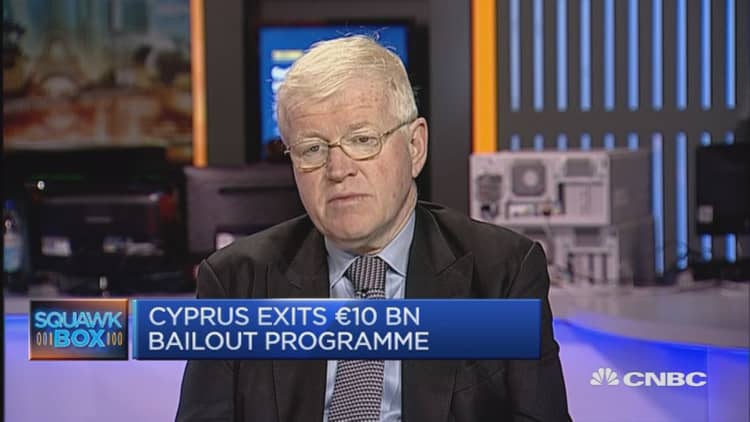Ireland trumped China and India to post growth of 7.8 percent in 2015, the euro zone country reported on Thursday.
The growth rate is sharply higher than the average for an advanced economy and highlights the country's successful recovery from the global financial crisis of 2008-2009.
Preliminary estimates from Ireland's central statistics office showed gross domestic product (GDP) increasing by 7.8 percent last year. In the fourth quarter, GDP increased by 2.7 percent on a seasonally adjusted basis on the previous three months. These results could be revised at mid-year.
Dermot O'Leary, chief economist at Goodbody Stockbrokers in Dublin, had forecast that GDP would come in at 7.0 percent.
"It is substantially above our expectations… off the charts in the European sense," he told CNBC after the results were out.
"I think the positive thing about these numbers is that the outperformance continued throughout the year and in fact there is a certain strengthening of momentum towards the end of 2015."
Manufacturing output rose by 14.2 percent in 2015, while capital formation rose strongly by 28.2 percent. Domestic demand increase by 9.3 percent, even as government expenditure fell slightly, by 0.8 percent.
O'Leary attributed the outperformance largely to the boost to trade from the heavy presence of multinational companies in Ireland. The country is a popular hub for pharmaceutical and IT services companies, in part due to its generous corporate tax regime.
This is somewhat controversial, with President Barack Obama criticizing U.S. companies that chose to relocate to countries, like Ireland, with lower taxes.
O'Leary said that so-called tax inversions helped support Ireland's GDP, which grew by 5.2 percent in 2014.
"Inversions are coming through in the numbers … one of the reasons for the volatility is because of the effect of inversions – and that is likely to be a feature of this year as well," he told CNBC.
The economist forecast Ireland's economy would grow by around 5 percent in 2016. "There was a lot of momentum going into this year and it looks like it continued," he said.

Ireland's economy boomed in the 1990s and early 2000s, leading to its "Celtic tiger" moniker, with rapid growth fuelled by foreign direct investment and an expansion in bank lending. However, the country was hit by the subsequent global financial downturn, leading to a collapse in its property market, a crisis in its banking sector and a bailout by the International Fund and European institutions.
Now, Ireland is viewed by some as a model for post-crisis economic recovery, returning to growth in 2010.
O'Leary attributed the recovery to the reforms passed between 2010 and 2013, which saw Ireland's banking sector restructured and its fiscal deficit reduced.
"Ireland's crash was largely a banking and property crash. The underlying fundamentals of the economy were strong even before the bailout and once we got the situation sorted, growth really stemmed from that point onwards," he told CNBC.


